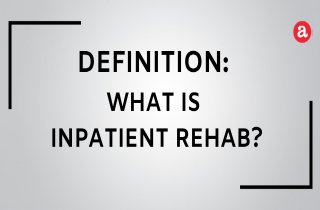Outpatient cleansing from opiates. Primary Psychiatry 1:42 -52, 1996. Long-lasting property treatment provides care 24 hours a day, normally in non-hospital settings. The best-known domestic treatment model is the restorative community (TC), with planned lengths of stay of in between 6 and 12 months. TCs concentrate on the "resocialization" of the private and utilize the program's entire communityincluding other homeowners, staff, and the social contextas active elements of treatment.
Treatment is extremely structured and can be confrontational sometimes, with activities created to help citizens take a look at harmful beliefs, self-concepts, and harmful patterns of habits and embrace brand-new, more unified and useful methods to interact with others. Many TCs offer extensive services, which can include work training and other support services, onsite.


Lewis, B.F.; McCusker, J.; Hindin, R.; Frost, R.; and Garfield, F. 4 domestic drug treatment programs: Task EFFECT. In: J.A. Inciardi, F.M. Tims, and B.W. Fletcher (eds.), Innovative Techniques in the Treatment of Substance Abuse, Westport, CT: Greenwood Press, pp. 45-60, 1993. Sacks, S.; Banks, S.; McKendrick, K.; and Sacks, J.Y.
Journal of Substance Abuse Treatment 34( 1 ):112 -122, 2008. Sacks, S.; Sacks, J.; DeLeon, G.; Bernhardt, A.; and Staines, G. Modified restorative community for mentally ill chemical "abusers": Background; influences; program description; initial findings. Substance Use and Misuse 32( 9 ):1217 -1259, 1997. Stevens, S.J., and Glider, P.J. Restorative communities: Drug abuse treatment for women.
Tims, G. DeLeon, and N. Jainchill (eds.), Restorative Community: Advances in Research Study and Application, National Institute on Substance Abuse Research Study Essay 144, NIH Club. No. 94-3633, U.S. Government Printing Workplace, pp. 162-180, 1994. Sullivan, C.J.; McKendrick, K.; Sacks, S.; and Banks, S.M. Modified therapeutic neighborhood for offenders with MICA disorders: Compound usage outcomes.
Short-term domestic programs provide extensive however fairly short treatment based upon a customized 12-step technique. These programs were initially developed to deal with alcohol problems, however during the drug epidemic of the mid-1980s, many began to treat other types of substance use conditions. The initial residential treatment design included a 3- to 6-week hospital-based inpatient treatment phase followed by extended outpatient therapy and involvement in a self-help group, such as AA.
These programs assist to reduce the risk of regression once a client leaves the domestic setting. Hubbard, R.L.; Craddock, S.G.; Flynn, P.M.; Anderson, J.; and Etheridge, R.M. Overview of 1-year follow-up outcomes in the Drug Abuse Treatment Outcome Study (DATOS). Psychology of Addicting Behaviors 11( 4 ):291 -298, 1998. Miller, M.M. Conventional techniques http://louiszcsb163.tearosediner.net/h1-style-clear-both-id-content-section-0-the-only-guide-for-what-percent-of-drug-addicts-relapse-after-rehab-h1 to the treatment of addiction.
The Basic Principles Of How To Get Residential Drug Rehab
Graham and T.K. Schultz (eds.), Concepts of Addiction Medicine (second ed.). Washington, D.C.: American Society of Addiction Medicine, 1998. Outpatient treatment differs in the types and intensity of services provided. Such treatment expenses less than domestic or inpatient treatment and often is more suitable for individuals with jobs or extensive social supports.
Other outpatient models, such as intensive day treatment, can be equivalent to domestic programs in services and effectiveness, depending upon the specific patient's characteristics and needs (how to pay for drug rehab without insurance). In many outpatient programs, group counseling can be a major component. Some outpatient programs are likewise designed to deal with patients with medical or other mental health issues in addition to their drug disorders.
Summary of 1-year follow-up results in the Substance abuse Treatment Outcome Study (DATOS). Psychology of Addictive Habits 11( 4 ):291 -298, 1998. Institute of Medication. Treating Drug Issues. Washington, D.C.: National Academy Press, 1990. McLellan, A.T.; Grisson, G.; Durell, J.; Alterman, A.I.; Brill, P.; and O'Brien, C.P. Substance abuse treatment in the private setting: Are some programs more efficient than others? Journal of Substance Abuse Treatment 10:243 -254, 1993.
Treatment retention and follow-up results in the Substance abuse Treatment Result Research Study (DATOS). Psychology of Addicting Behaviors 11( 4 ):294 -307, 1998. Embellished drug counseling not just focuses on reducing or stopping illicit drug or alcohol use; it likewise addresses associated areas of impaired functioningsuch as work status, prohibited activity, and family/social relationsas well as the content and structure of the patient's healing program.
The dependency counselor motivates 12-step involvement (a minimum of one or two times per week) and makes recommendations for required supplemental medical, psychiatric, employment, and other services. Lots of therapeutic settings utilize group treatment to capitalize on the social support provided by peer conversation and to help promote drug-free way of lives. Research has actually revealed that when group treatment either is offered in conjunction with embellished drug counseling or is formatted to show the principles of cognitive-behavioral treatment or contingency management, positive outcomes are accomplished.
Typically, drug abusers enter contact with the criminal justice system earlier than other health or social systems, providing chances for intervention and treatment prior to, throughout, after, or in lieu of incarceration. Research study has actually shown that integrating criminal justice sanctions with drug treatment can be reliable in reducing drug abuse and related criminal activity.
Research studies reveal that for incarcerated people with drug issues, beginning drug abuse treatment in prison and continuing the same treatment upon releasein other words, a seamless continuum of servicesresults in better outcomes: less substance abuse and less criminal habits. More details on how the criminal justice system can deal with the issue of drug addiction can be found in Concepts of Substance Abuse Treatment for Bad Guy Justice Populations: A Research-Based Guide (National Institute on Substance abuse, revised 2012).
Fascination About What Is Initial Establishment Into A Drug Rehab Program Like
When considering addiction treatment, you might be wondering what you can anticipate during a standard day in rehab. There are numerous kinds of substance abuse treatments out there, but the majority of follow a standard structure of treatments. Residential inpatient treatment centers are extremely structured and arranged, with comparable activities and treatments in a lot of centers.
Depending on the setting and the facilities provided, everyday activities may vary. Here is an example of what a typical day in treatment might appear like: Oversleeping is not part of the program, so expect to increase early in the morning to take pleasure in a healthy breakfast. Some programs use early morning classes such as yoga or meditation to help you start the day in a relaxed state of mind.
I satisfied a lot of great individuals and discovered how to change my old behaviors on a daily basis Go in with an open mind and be willing. Do it for you, not any person else.- Ryanna, recuperating addictThere is frequently a group session following breakfast led by a counselor or therapist that concentrates on subjects connected to the treatment process, the $112-step program, addiction and healing.